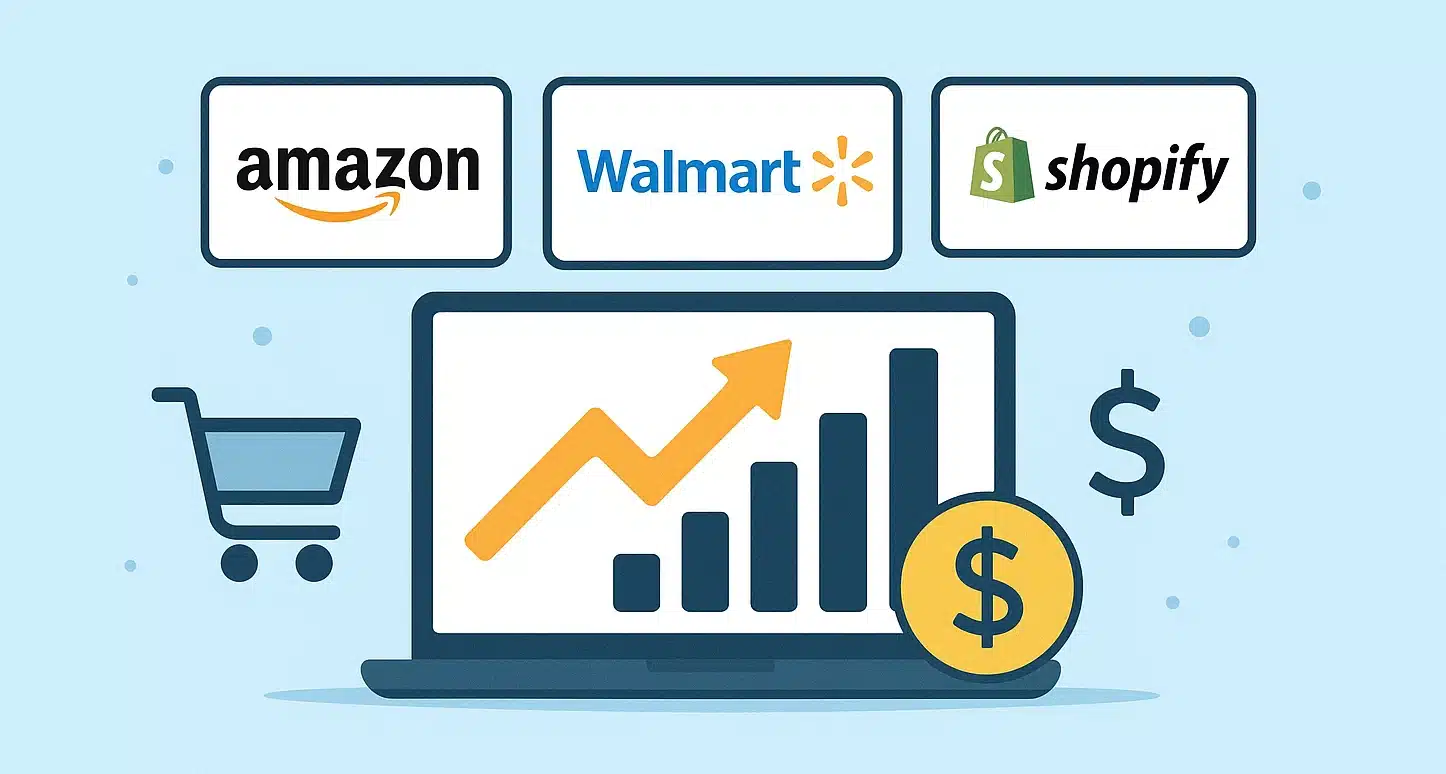
Amazon, Walmart, and Shopify Integrations: Which Drive the Most Sales?
In 2025, US e-commerce sellers face a critical question: which marketplace integration drives the most sales Amazon, Walmart, or Shopify?
Each platform has unique advantages, and choosing the right one depends on your product category, target audience, and fulfillment strategy. With Willow Commerce Integrations, sellers can connect to all three, manage inventory seamlessly, and maximize revenue across multiple channels.
Amazon Integration: The Global Leader
Amazon Integration remains the most powerful for US sellers:
- Pros:
- Access to 200M+ US Prime shoppers
- FBA (Fulfilled by Amazon) ensures fast, trusted delivery
- Built-in customer trust and higher conversion rates
- Cons:
- High competition
- Fees can eat into margins
- Best For: Sellers with scalable inventory and competitive pricing
Walmart Integration: The Rising Challenger
Shopify Integration gives sellers full control of their direct-to-consumer (D2C) brand:
- Pros:
- 120M+ monthly online visitors
- Lower competition compared to Amazon
- Walmart’s logistics network supports same-day and 2-day delivery
- Cons:
- Stricter onboarding requirements
- Limited global reach compared to Amazon
- Best For: US-based sellers wanting marketplace growth with less competition
Comparison Table: Amazon vs. Walmart vs. Shopify
| Feature | Amazon | Walmart | Shopify |
|---|---|---|---|
| Market Reach (US) | 200M+ Prime users | 120M+ monthly visitors | Depends on marketing & brand reach |
| Fulfillment | FBA / FBM | Walmart Fulfillment Services (WFS) | 3PL, dropshipping, or in-house |
| Competition | Very High | Moderate | Varies (depends on niche) |
| Fees | High (referral + FBA) | Moderate | Subscription + transaction fees |
| Customer Data | Limited (Amazon controls) | Limited | Full ownership |
| Best Suited For | Large-scale sellers, competitive pricing | US-focused sellers with strong logistics | D2C brands, marketing-driven growth |
FAQs
Amazon typically delivers the highest sales volume due to its massive customer base, but margins may be lower.
Yes. Walmart is growing fast and offers less competition than Amazon, making it a valuable channel.
Shopify gives full control over branding and customer relationships, making it ideal for long-term growth.
Yes—with Willow Commerce Integrations, you can manage Amazon, Walmart, and Shopify from one dashboard.
By centralizing orders, automating shipping labels, syncing inventory, and optimizing fulfillment across multiple platforms.
Amazon, Walmart, and Shopify each offer unique benefits. Amazon leads in sales volume, Walmart provides growing opportunities with less competition, and Shopify ensures brand ownership and flexibility.
For most US sellers, the best strategy is a multi-channel approach. With Willow Commerce Integrations, retailers can connect all three platforms, reduce complexity, and unlock scalable e-commerce growth in 2025.
» Start Your Free Trial


